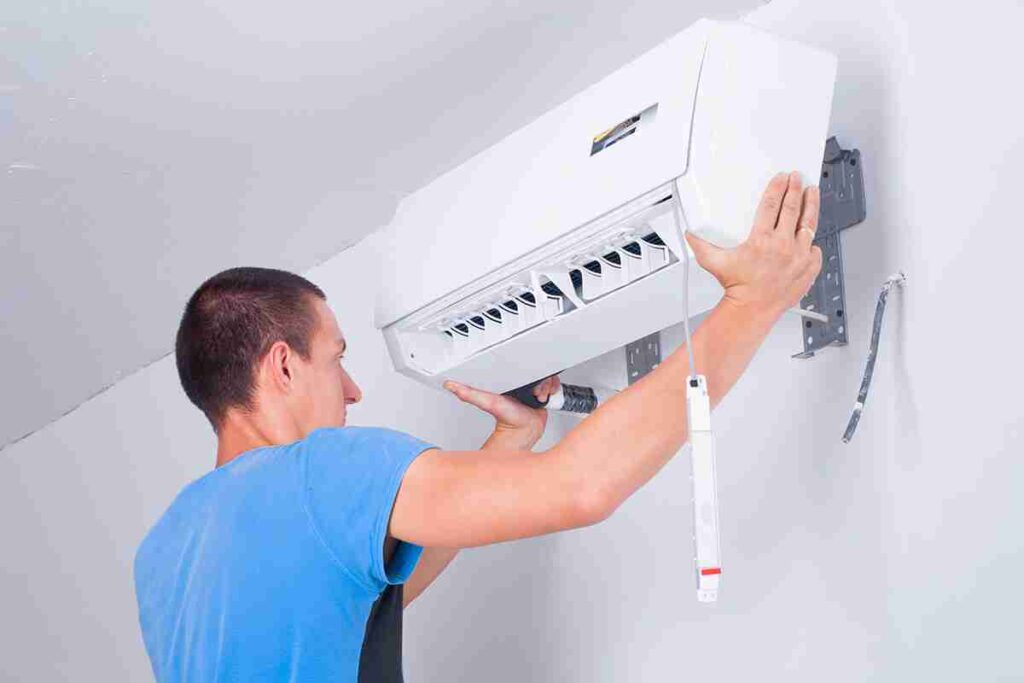Home air conditioning systems help keep your house cool, especially in hot summers. However, installing a new air conditioner may become quite difficult and substantial without proper management. Preparation and knowledge about the entire process are essential to ensure seamless air conditioner installation.
Research and Choose the Correct AC Unit:
Getting the correct air conditioning unit is the key strategy to ensuring a perfect installation. Below is a more elaborate explanation of how to make the right decision.
Determine the Right Size:
In AC units, size does matter when it comes to performance and efficiency. If it is too small, it will work too hard to try and keep your home cool. If it is too big, you are wasting your money, and, maybe not cooling evenly through your home. Air conditioner size is measured in units called British Thermal Units (BTUs) or tons. To be able to find the right size you may use the load calculation tool or seek guidance from a professional HVAC, who can gauge your homes need. The size of your home, the number of windows, the quality of insulation, and the local climate all matter in how big or small you need to go.
Efficiency in Energy:
When selecting an air conditioner one should consider the Seasonal Energy Efficiency Ratio (SEER) rating. Just like EER measures cooling capacity over the hottest weather, SEER goes ahead to rate the cooling ability concerning annual cooling usage. Generally units with a higher SEER are considered more energy efficient, reflecting savings that come with time. Look for units with Energy Star certification this means they meet strict energy efficiency standards by the U S Environmental Protection Agency.
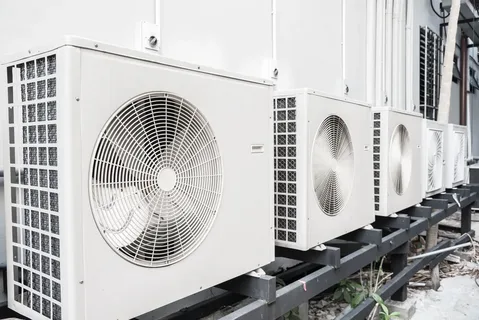
Types of AC Units:
Central air conditioners, ductless mini-split systems, and window units are the air conditioning systems that are now being sold on the market. Central air conditioners are outstanding in the cooling of an entire house and often prove to be pretty well in the case of larger spaces. Ductless mini-split systems are fit for homes, and fitting in is not a hassle since it offers flexibility in regulating temperature in single rooms. Window ac units sort out the smaller spaces or just individual rooms.
Features and Technology:
Modern air conditioners incorporate technology and features for improved comfort and convenience. Remote-wise control units help to control the functioning of the AC unit from any place by a smartphone through an application. This allows for customization of the places on your air conditioning unit and to review how much energy your unit is using at any given time. Variable speed motors can provide a more accurate, even flow of air for temperature control and, in some instances, improved energy efficiency. Some units have air purifiers or dehumidifiers to ensure better IAQ.
Employ the services of the correct AC Installation Company:
Choosing an AC installation company ensures smooth installation work. Here is how to hire a suitable contractor:
Experience and Expertise:
Search for a company that has a high level of experience in installing air conditioners. An experienced contractor will have the knowledge and skills required to handle any installation task while ensuring your system is properly installed. Look for bodies and certifications such as North American Technician Excellence and the Refrigeration Service Engineers Society which create an impression that the technicians have been under strict training and also testing.
Client Reviews and Testimonials:
Look up client reviews and testimonials to establish the company’s reputation. Websites like Yelp, Google Reviews, or the Better Business Bureau can be very insightful about the reliability, professionalism, and quality of any service company. Look up comments related to punctuality, workmanship, and post-installation support.
Licensing and Insurance:
Licensing and insurance are very important for any installation company. First and foremost, a valid license means that the firm has passed the laws and guidelines of companies working for it. Also, insurance ensures that one is not vulnerable to liabilities in case damages and accidents occur during the installation process that the company undertakes.
Professionalism and Communication:
Assess the degree of professionalism and communication the company has. A good and reputed contractor will be responsive, polite, and ready to answer all your queries. Good communication makes the context of accepting and granting the services very clear. Hence, it shall be a very smooth installation process further and there shall be less chance of any dispute about the context of granting the services by each party involved.
Get Multiple Quotes:
Sourcing for quotes the various companies makes it easy for you to compare their prices and services. Here is how to approach this step.
Request Detailed Quotations:
Request detailed quotations from at least three different AC installation companies. The quotations indicate all the costs: the labor, materials and equipment, and any other fees that may be necessary. In this way, you can tell exactly how much the whole service is going to cost you without incurring those hidden or additional charges.
Compare Services and Warranties:
Compare Services and Warranties While you are making your price comparison, take into account what is being offered at those prices. Some might have a higher cost but come with more services under that quoted price. For example, some include periodic post-installation surveys, post-installation maintenance, or an allowance for extended warranties. Do some evaluation to come to a reasonable determination of how much you would be willing to pay for that kind of price.
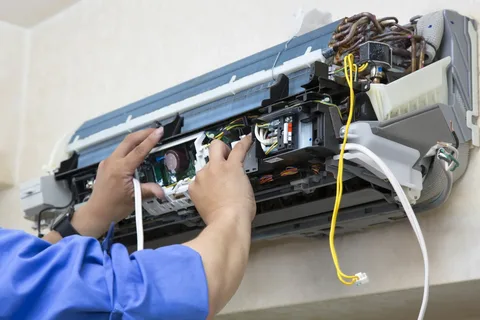
Prepare Your Home for Installation:
Proper preparation makes installation a smoother and more efficient process. The following are some steps to take to prepare your home
Remove Obstructions and Scatter Parts Loose:
Before installation starts, ensure that the inside and outside work area is free from obstructions and clutter. Remove items like furniture and appliances or anything that will make the installation cumbersome and difficult. Technicians will need working space on all four sides of the indoor air handling unit, and the outdoor condensing unit.
Access Points:
Allow easy access to areas where the installation will take place. This shall mean clearing space around electrical panels, ductwork, and other units that technicians need to get near. Pathways and doorways should also be wide enough for the equipment and technicians to move.
Secure Pets and Children:
Keep pets or children out of the installation area to prevent them from being a source of distraction and possible accidents. Inform the people residing with you of the schedule for carrying out the installation, allowing them to keep out of the way in the meantime.
Safeguard your property:
Consider covering floors and furniture to shield them from dust and waste that may result from the installation process. This will maintain cleanliness on your premises and protect against accidental damage.
What to Expect from the Installation:
Understanding what to expect will enable you to develop realistic expectations and be prepared for any disruptions:
Removing the Old Unit:
First and foremost, this process applies if you are replacing any air conditioner unit that is currently in use. It entails disconnection of the electrical and refrigerant lines, draining the refrigerant contents, and detachment from the installation mounting. Proper disposal of the old unit is important for following the surrounding environment.
Installing the New Unit:
The installation of the new AC unit includes many installations. It is then mounted on a concrete pad or mounting bracket, and the indoor air handler is placed in an appropriate location, like a closet or attic. The technicians will go on to connect the refrigerant lines, electrical wiring, and ductwork to the new system.
Testing and Calibration:
Once installed, the system must be properly checked for proper functioning; one of these functions is checking refrigerant levels followed by testing electrical connections and system performance. The thermostat will also be calibrated and thereafter a final inspection done to be sure the system is according to the manufacturer’s specifications and that it is operational effectively.
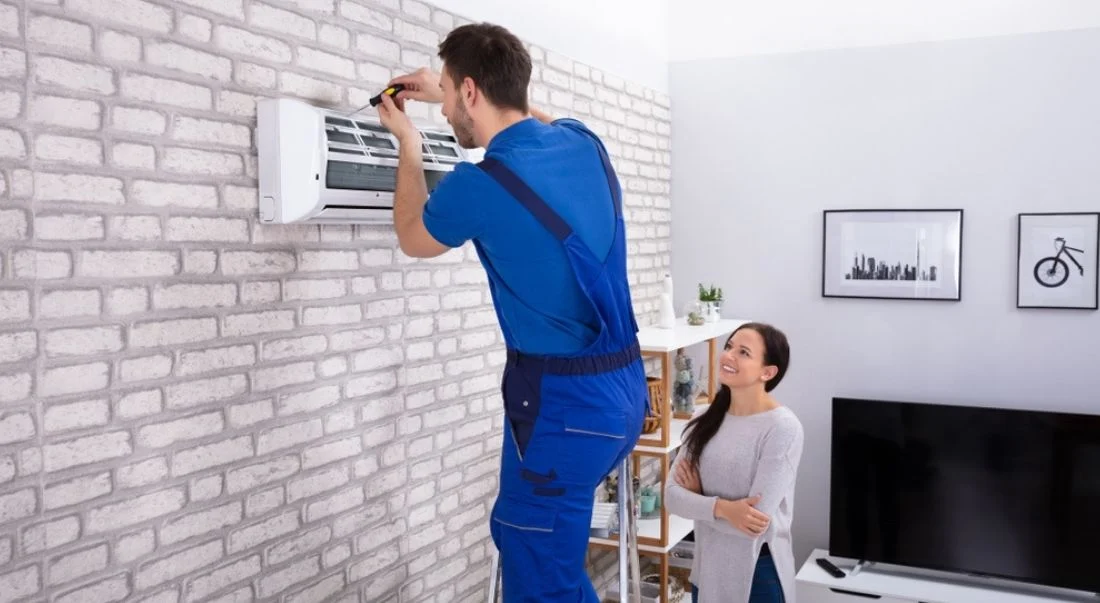
Post-Installation Support:
It is the surest way of ensuring AC performance and its longevity. Look for the following:
Follow-Up Services: Check with the installation company on the follow-up services available. These must also include system checks and the whole rigmarole of maintenance services in case troubleshooting arises. Following installation, a good company will always offer help in the event of difficulties and ensure your system does not fail.
Maintenance Plans:
You intend to be enrolled in a maintenance plan that serves to keep your AC system in top-notch condition. Preventative maintenance will help to avoid faults, reduce energy consumption, and prolong the life of the equipment. Normally, a maintenance plan contains routine reviews, cleaning, and minor repairs.
Customer Service:
Enquire about the company’s customer service. An organization that respects the satisfaction of its clients should seriously look into your case should you ever need help or file complaints. Effective customer service is very important as it will make you enjoy and address any hitch should there be any after installation.
Conduct a Contract Review:
As the installation starts, please look through the contract to ensure the clear and correct terms agreed upon. Now focus attention on:
Scope of work:
The contract must more elaborately detail the work, details on performance, installation procedures and equipment specifications for the equipment and additional services in the scope, which meet your expectations and the received quotes.
Payment Terms Review the payment schedule:
Deposits may be needed; you may worry if a company needs you to pay in full, upfront. A reasonable payment schedule consists of an initial deposit and then proceeds with funding in case certain objectives are covered.
Cancellation and Refund Policies:
Understand how you might cancel the contract if need be and what needs to be done so you can receive a refund; penalties or fees in the event of a cancellation; process and steps to take if you need a refund of your money in case you are not in agreement with the work completed.
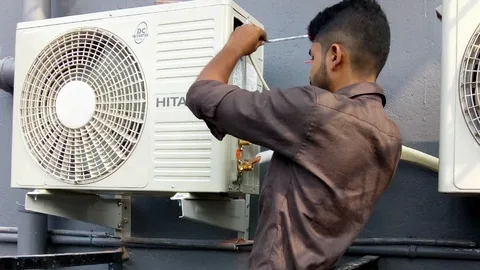
Environmental Conservation and Energy Efficiency:
The ability to choose an energy-efficient AC unit is not only good for your pocket but for environmental conservation as well, and here are the things to put into consideration:
Energy Star Certification:
Look for ENERGY STAR certified units that have met strict energy efficiency guidelines set by the Environmental Protection Agency. ENERGY STAR certified units use significantly less energy and this may just go a long way toward reducing your utility bill and freeing up your carbon footprint on the environment.
Eco Friendly Refrigerants:
Look for AC units that work with eco friendly refrigerants such as R 410A or R 32. These refrigerants have lower global warming potential compared to the older ones, such as R 22 which is being phased out due to its hurtful effects on the ozone layer.
Efficiency Ratings:
All units have besides SEER ratings other efficiency ratings the previous one is the Energy Efficiency Ratio and the other is the Coefficient of Performance. These ratings provide additional information about the unit’s efficiency under specific operating conditions.
Stay Informed About Local Regulations:
Different regions have specific regulations and building codes related to AC installations. Here’s what to keep in mind:
Building Codes:
Get familiar with the local building codes and regulations specific to AC installations. They can have a relation to the installation process, electrical connections, and proper refrigerant handling. Adhering to these codes helps one avoid fines and ensures the installation meets proper standards for safety.
Permits:
Some regions may require you to have a permit for your HVAC installations. When hiring, make sure to check with your regional building authorities and see if a permit is required for the installation; an installation company should be familiar with the process and may help you secure any relevant permits.
Communication:
You need good communication between you as the client and the HVAC installation company. This can range from the company being able to:
Set Expectations:
Be sure to let them know your expectations and if you have any specific parameters about how you want the installation to be done. This will save you and the designing company from any confusion and ensure that the installation is done according to your requirements as well.
Ask Questions:
If you are confused about something related to the installation process or any equipment, you shouldn’t shy away from asking questions. Good companies will happily answer your queries and put you at ease.
Leave Feedback:
Finally, after the installation, leave the company feedback about the services rendered. This helps the company keep improving its services and is also valuable to other customers.
Conclusion:
Smooth AC installation needs thoughtful work, research up ahead, and communication. Below are a few steps to help one ensure that their new air conditioning system is installed effectively and efficiently. Each step in the process is important in achieving performance and comfort, from proper unit selection to choosing a reputable company, home preparation, and understanding the installation itself. With the right approach, living conditions can be nice and pleasant all year round.

